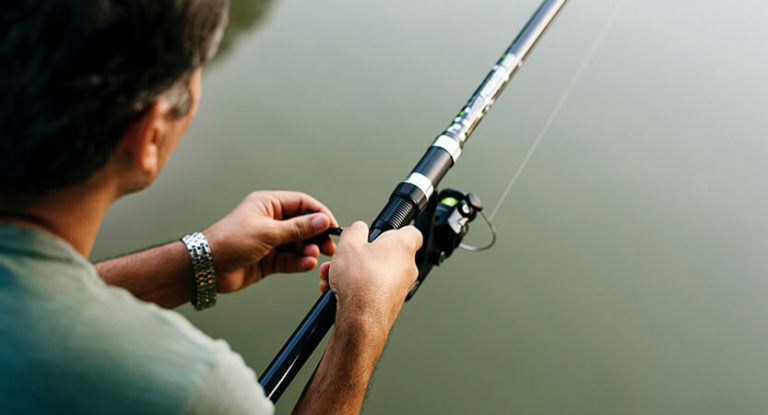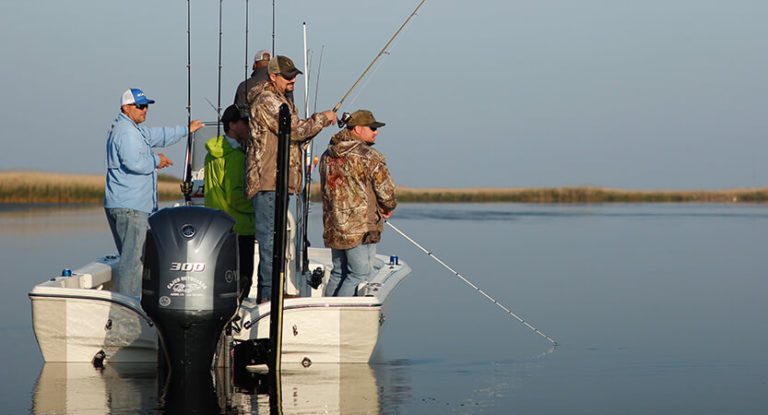Winter fishing is radically different from summer fishing. There are much fewer fishermen who prefer to spend time on reservoirs in severe frosts than lovers of summer warmth and the beauty of nature in its prime. One of the reasons for this unequal ratio is the need to purchase rather expensive equipment and equipment. But everything is not so expensive and scary, if you approach the issue competently. Today we will tell you about the rules for choosing an ice screw, and winter fishing will certainly seem much more attractive to you.
This tool is one of the main components of a winter angler’s outfit, and in many cases the most costly. That is why his choice should be taken with full responsibility. We will help you deal with all sorts of nuances that are relevant for the selection of this piece of equipment, we will introduce you to its design and the principle of operation, we will help you choose the best option for your case. We hope that the first trip to the ice with a brand new drill will be not only pleasant for you, but also productive!
Here is an overview of the content of this tutorial, feel free to jump to any section you care about:
For more fishing instructions, take a look at these popular Trizily links: Best Spinning Reels, Best Fish Finders.
- How To Choose A Fishing Hook
- Best Weather For Fishing In Winter
- How To Catch Big Fish- Tactics, Lures and Tips
Purpose and principle of action
An ice screw, as the name implies, is a tool for drilling ice. This is an evolution of the paw, known from the old days, which is a crowbar with a handle. Unlike the primitive “foremother”, the ice screw does not break, but cuts the ice cover. The knives break off small pieces, going deeper and deeper into the thickness. By varying the parameters of the knives, you can cut holes on ice of any condition, from wet and loose to hard stone dry, with minimal physical costs.
The role of a paw in the outfit of a modern fisherman usually comes down to checking the condition of the ice for strength, which is especially important in the first ice and during the period of spring warming. It can also eliminate the weak crust that covered the previously drilled wormwood, but to organize a new hole you need a more serious and productive tool, otherwise fishing will turn into a physical training lesson.
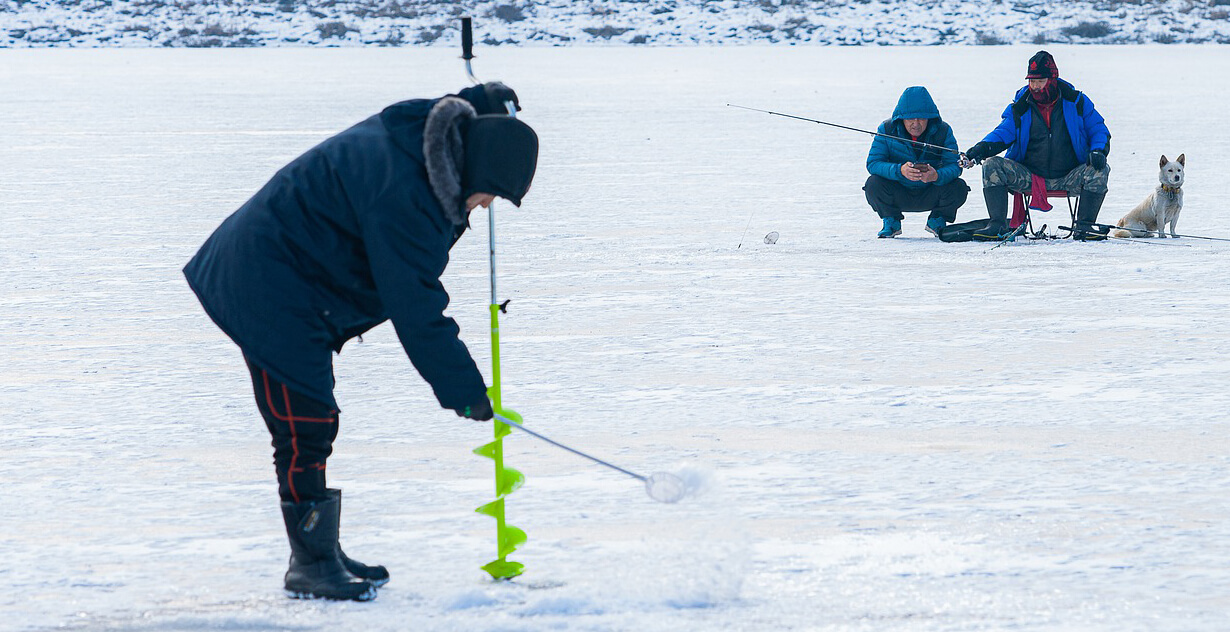
The use of an ice screw allows you to minimize the cost of effort and time. The design is designed so that both hands are involved in the process, with a more or less even distribution of the load. Modern models can be equipped with gasoline and electric engines, which makes the work even more comfortable and fast.
The most popular design solutions
Scientific and technological progress has given rise to many types of constructive solutions for ice augers. Several more or less stuck:
- Auger . The most common type of construction, which we will talk about in detail a little later. Drilling is done manually by rotating the auger equipped with knives.
- Scapular . The working part of such a tool resembles a spatula or spoon. It bites into the thickness of the ice and pulls the fragments out. Even in a high-quality performance, this instrument is not very productive.
- Annular . In theory, the idea is not bad: a ring-shaped cutter knife cuts a neat column in the thickness. But in practice, this idea turned out to be not very comfortable for work: the hole is even for an exhibition, but an unreasonably much time and effort is spent on it.
- With engine . If you are going to fish on ice regularly, we recommend opting for an ice screw with a fuel (gas) engine or an electric drive. Yes, such models are more expensive: a good motor-drill will cost 150 – 200 dollars, and the electric version will cost twice or even three times more. Gasoline models are usually more efficient than electric ones, but they work loudly and naturally emit a decent amount of exhaust gases. The power tool works almost silently, from the battery. In most cases, it is possible to charge from a car cigarette lighter. All existing models with engines at the heart of the design have classic augers with knives.
- Combined . A very interesting and economical option for zealous anglers. Many modern ice augers are manual by default, but provide for the ability to connect power tools with specified characteristics. Usually they mate with reliable screwdrivers (the ability to adjust the rotation speed is essential). At first, such ice augers were exclusively handicraft (any manual model can be modified with an adapter for a power tool in just a couple of hours). But now the manufacturers of fishing equipment have seized on this idea, delighting the consumer with ice screws with constructively built-in adapters: if you want – with the hands of the storm, if you want – connect the tool.
Ice screw auger device
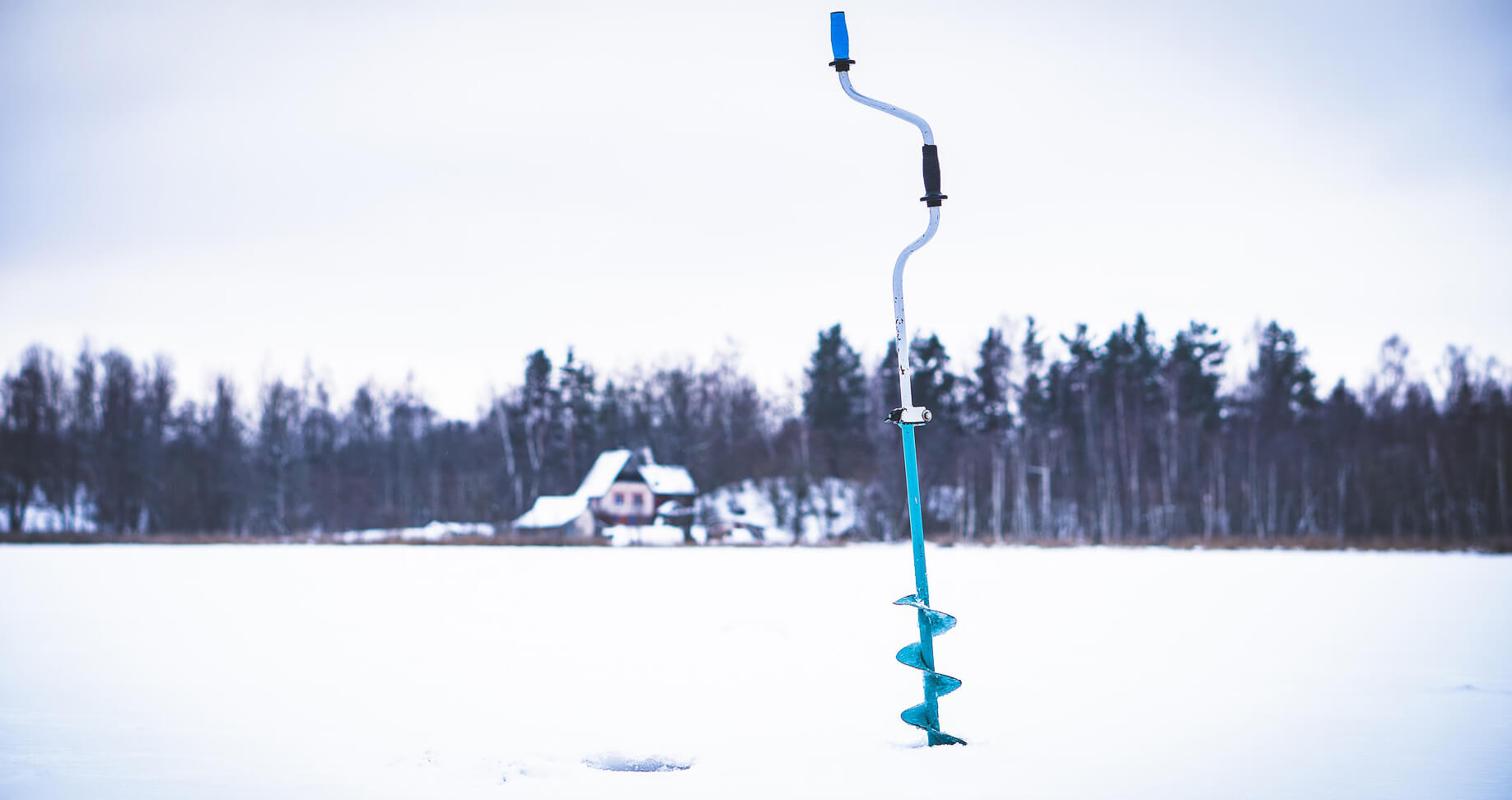
Almost all modern models have a simple and reliable design solution. They are composed of three main elements. Let’s consider them sequentially:
- Handle . The metal handle has a zigzag shape. It implements the brace principle. There are two handles on a metal rod, gripping with both hands: one at the end, the other at the bend of the handle. This design provides optimal load distribution while drilling and tool stability. Grip handles are usually made of non-slip polymer or rubber (sometimes grooved) that is resistant to low temperatures.
- Auger . The moving part of the tool is a central axis, on which a strong steel strip is welded in a spiral. Its function is to transfer the force from the handle to the knives and remove ice fragments from the hole during operation. The auger is most susceptible to corrosion and high mechanical stress.
- Knives . The hardest, strongest, and at the same time the most delicate part of the instrument. Well-sharpened knives literally cut hard ice like butter, but with improper care or load distribution, they fail more often than other elements.
Main selection criteria
The modern industry offers winter fishing enthusiasts a lot of options. The choice of the optimal model of an ice screw is complicated not by a drawback, but by an abundance of proposals. The instrument is purchased for more than one season, so you should take into account many nuances, including:
- Longevity . In this case, the quality of materials, coating and assembly is of fundamental importance. A couple of flaws when welding the tape – and the tool will become unusable in the first couple of seasons.
- Comfort at work . The tool should be comfortable not only at the first turns of the handle: if you immediately experience strong physical stress, then this is either the wrong model, or problems with the organization of work.
- Fit for purpose . You should consider how intensively you plan to use the ice drill, consider the local realities of winter fishing (thickness and quality of the cover), your own physical condition, and so on.
Now let’s talk about choosing the optimal model in detail.
Diameter
The drilling diameter is determined by the respective characteristics of the auger and knives. It would seem that the larger the hole diameter, the more comfortable it is to fish in it. On the one hand, this statement is true: a spacious hole freezes more slowly, the largest fish will pass into it, any tackle can be used. However, it should be borne in mind that the larger the hole, the more difficult it is to drill it physically, so the loss of time and effort in many cases will be unreasonably large. It is especially difficult to drill through thick, non-uniform ice at the end of winter.
If you prefer a stationary type of fishing, then it is supposed to drill several holes, which you will fish. Here you can stop at a storm of a larger diameter: organizing a fishing site will not take a lot of effort, and large holes freeze over more slowly. With the running method, it is advisable to take a thinner drill – here the priority is to save energy, the issue of freezing is not so fundamental.
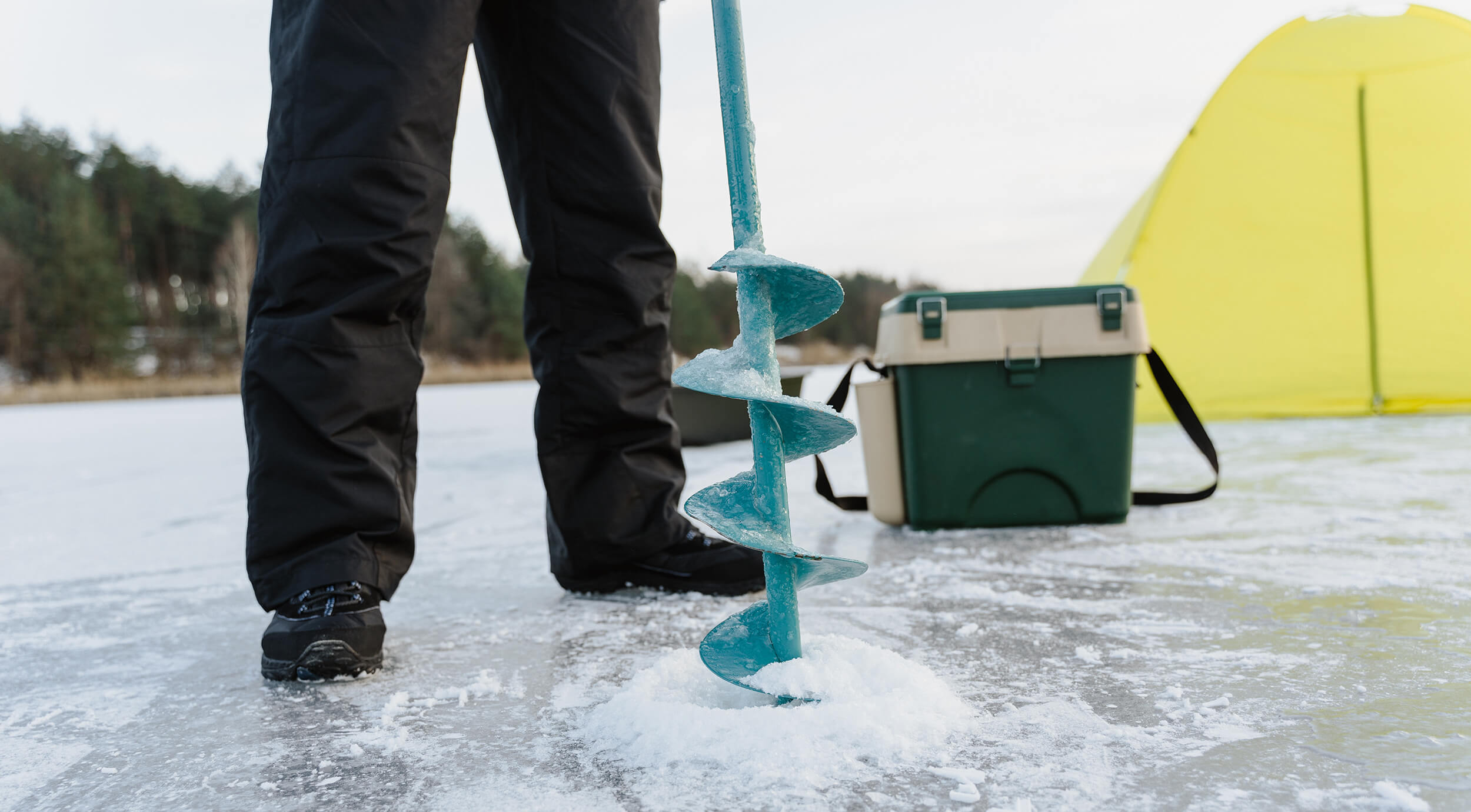
In light of the above, it is worth taking an ice screw that best suits your requirements:
- 90-100 mm . Ideal for fishing with a jig for all sorts of little things like grass perch or roach. In addition, such options are successfully used for reconnaissance with an echo sounder, before drilling the main holes and installing fishing gear.
- 110-130 mm . Most bore diameter suitable for many purposes. In holes of appropriate sizes, you can successfully use balancers , winter spoons and other baits that require active animation. A fish weighing 4-5 kilograms will crawl into a hole of this diameter, and a narrow-bodied predator is even heavier.
- 130-150 mm . Such ice augers are usually chosen by breamists: the possibility of catching very solid specimens with passive tackles is assumed, therefore the issue of “penetration” and “non-freezing” is put at the forefront.
There are models with a diameter of up to 20 cm, but they are usually equipped with gasoline engines – only a very physically strong person can manually drill such a hole in thick ice.
Maximum cross-country ability
For residents of the US and parts of Europe, not to mention warmer regions, the issue of the maximum ice thickness that an ice screw can overcome is not very relevant. Global warming has contributed to the fact that ice in many water bodies is not installed in principle, and if there is, then the thickness of the cover does not exceed several tens of centimeters.
Most models are designed for drilling to a depth of 1-1.25 m, and this is more than enough in most cases. However, for cold regions, this indicator is not always satisfactory, so some manufacturers produce special elements that increase the length of the screw by several tens of centimeters. That’s all: if this depth is not enough, you will have to retrain as mechanics and modify the tool on your own.
Knives
Knives are the most “delicate” and needing maintenance part of the ice screw: they bear the maximum load. The most common are ice screws with a pair of knives located on the auger opposite each other and fixed with screws. The knives can be flat, spherical, or a single structure that fits into the auger (cutting head). Ultra-strong steels and alloys are used in their production.
Let’s figure out the advantages and disadvantages of various types of knives:
- Flat . A pair of knives of this type is installed on most domestic models. They perform well on dry ice, but they often get stuck on wet and loose ice. Another common “disease” is loosening of fasteners, which forces anglers to replace native bolts with longer ones and put nuts and washers on them. Cutting edges can be straight, rounded, serrated, stepped – there are many options. It is better to choose models with rounded edges: at first they may seem less productive, but the risk of chipping the edges is minimized.
- Spherical . On dry ice, spherical knives work worse than flat ones, but they do not get stuck in a damp and loose cover, which is especially important during our unstable winters. Their main disadvantages are the high price and complexity of sharpening.
- Cutting head . If you choose an ice screw with a single cutting head, be prepared for the fact that you will have to turn to specialists for sharpening the cutting planes. If an element becomes unusable due to a chipped edge, it will have to be completely replaced, which is expensive and problematic. But you get rid of the problem of loosening fasteners and the need for handicraft modifications, getting an excellent tool for drilling ice of any condition.
Other parameters
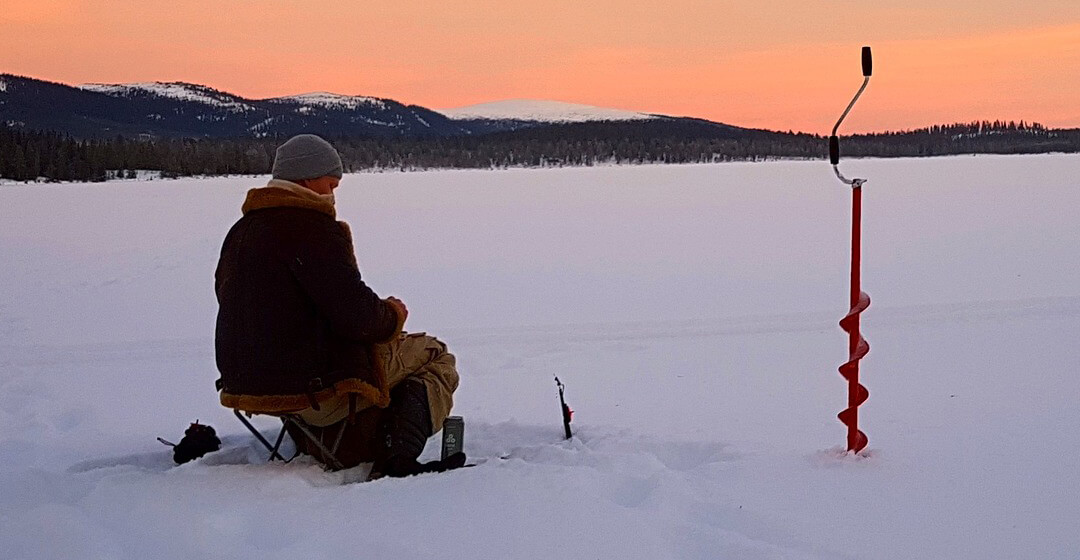
Among other criteria that determine the choice of the optimal tool, one should take into account:
- Connecting nodes . The connecting unit is responsible for attaching the handle to the auger. Most of the models consist of two structurally separate elements (knives do not count), therefore, they have one connecting unit (axial lock, folding system). Telescopic assemblies allow you to adjust the height of the handle, but do not differ in premium reliability. The most reliable are simple assemblies that provide rigid fastening of the handle to the bolts. However, the most popular are folding options: they are almost as reliable as simple ones, but the ability to fold / unfold provides a quick transfer of the tool from transport to working condition and vice versa.
- Auger . The most problematic point is attaching the spiral tape to the central axis. An ice screw while fishing is under significant stress, and a poorly welded tape sometimes comes off. Most manufacturers use spot welding in varying degrees of quality, but if possible, opt for the full length welded tape.
- Handles . The handles are spread on either side of the brace and ideally provide maximum grip. Rigid polymers in this case are not ideal: they crack from mechanical stress, they do not always withstand frost. On modern models, handles made of special rubber that are resistant to impacts and low temperatures and are softer to the touch are usually installed on the bottom.
- Materials . In the vast majority of cases, manufacturers use high-quality steels, but there are also models made of titanium. They are stronger (but it is difficult to break a steel ice screw in the area of the auger) and lighter than steel counterparts, but during operation they demonstrate similar performance, and even ring loudly. Whether to overpay for titanium is up to you.
- Coverage . When choosing an ice screw, pay attention to the quality of the coating – it should be smooth and free from defects. The smallest defect during painting results in a rusty spot after the first fishing trip. Titanium instruments are not covered with paint – this metal is already resistant to corrosion.
- Move . Oddly enough, but foreign manufacturers did not take into account the fact that most of the inhabitants of our planet are right-handed, and the left movement (counterclockwise) is objectively more comfortable for them. So if you take an imported ice auger, keep in mind that the main load will most likely fall on the left hand.
- Mass . When fishing with the running method, the weight of the equipment is fundamental, so it is worth stopping at the option of a smaller mass (here the choice of a lighter titanium is justified). Non-powered steel models weigh in the range of 2.5-3.6 kg – the difference is not too big. However, it should be borne in mind that it is easier to work with a heavier tool: you have to lean less on the handle.
- Price . Imported models from Scandinavian manufacturers are always more expensive: the starting price is from 70- 100 dollars. The cheapest domestic version will cost 20 dollars – inexpensive even with a limited budget. Good motor-drills cost 150-200 dollars, and the price of electric models can go up to 400-600 dollars.
Ice care
No matter how high-quality the ice screw is, if the rules of care and operation are not followed, it will become unusable earlier than the deadline for it. Therefore, it is worth remembering a few rules that can prolong the life of this, as a rule, an expensive tool:
- After reaming the hole, you need to get rid of the wet crumb from the tool. To do this, it is enough to bury it a dozen centimeters in dry ice.
- If the ice is wet and loose, and there is a sharp cold snap on the nose, it is better to rinse the ice screw in the hole and just put it next to it. If you screw it into ice, there is a risk that it will freeze in there.
- It is better to thaw ice from an instrument in a natural way, in a warm room. Open fire is risky to use: at best you will have to sharpen your knives again, at worst you will have to choose a new ice screw.
- The knives need to be protected from mechanical damage: they can be damaged even with the usual falling of the tool, and even if you chop ice with them manually – just like buying a new set. Remember to use protective covers for every transport and storage.
- After each fishing, you should thoroughly wipe the tool with a rag and dry it at room temperature.
- Do not forget to periodically lubricate the joints with machine oil, and dry and lubricate the tool completely when storing for summer storage.
- Do not neglect painting the places where metal is exposed under the paint: corrosion spreads very quickly.
Fishing tips
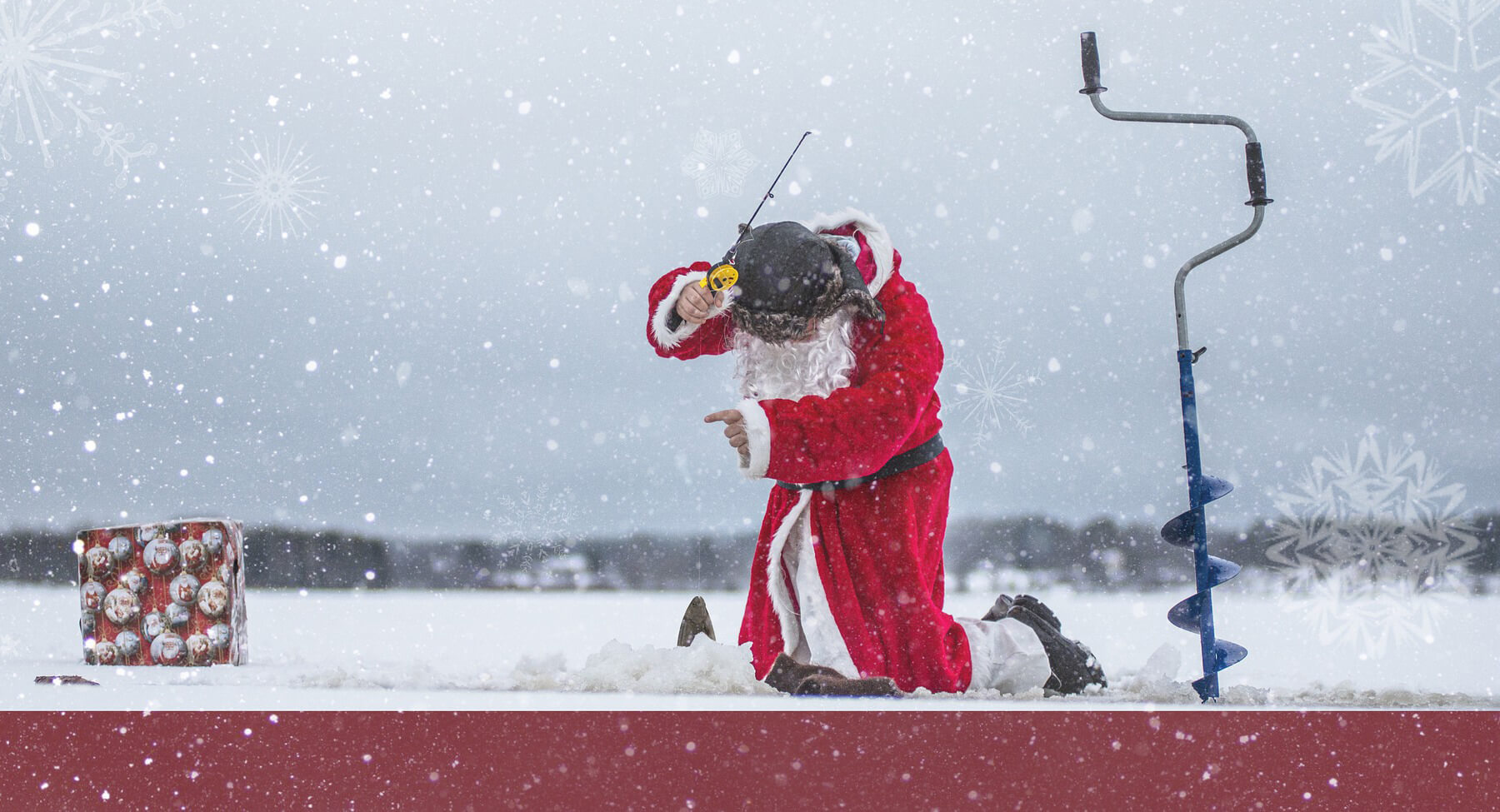
By good tradition, at the end of the publication, we give you some practical advice from experienced anglers:
- Do not rush to go out on the ice . Excitement and the desire to go out on the ice faster is a noble business, but risks are not associated with it. Yes, the bite is good on the first ice, but it is clearly not worth your health, or even your life. It is recommended to wait until the thickness of the ice reaches 7-10 cm and only then go fishing, or, in extreme cases, scout the path with an ice pick.
- Calculate your own strength . Choose an instrument for yourself, without chasing a huge number of large holes. Get a reliable, high-quality, medium-weight and medium-sized ice drill and remember to sharpen your knives periodically.
- Feel free to liaise with other anglers . If you go fishing with a company, make sure that each team member has an ice screw with the necessary, but different characteristics. In this case, the diameter is fundamental (for exploration and fishing, it is different), as well as the angle of attack of the knives under dry / wet ice and reaming of old holes.
- Have a spare set of knives in your arsenal . If the ice is dirty, interspersed with sand and stone, you can spoil the knives on the very first hole. Always take with you a spare sharpened pair, a screwdriver, and a replacement kit (bolts, nuts, etc.).
- Use the ice screw only for its intended purpose . The ice screw is so named because it can only be drilled into ice. Never use a highly specialized earthmoving tool!
We hope that after reading our publication you will be able to find the best tool for winter fishing. Let your every step on the ice be safe, comfortable and effective!

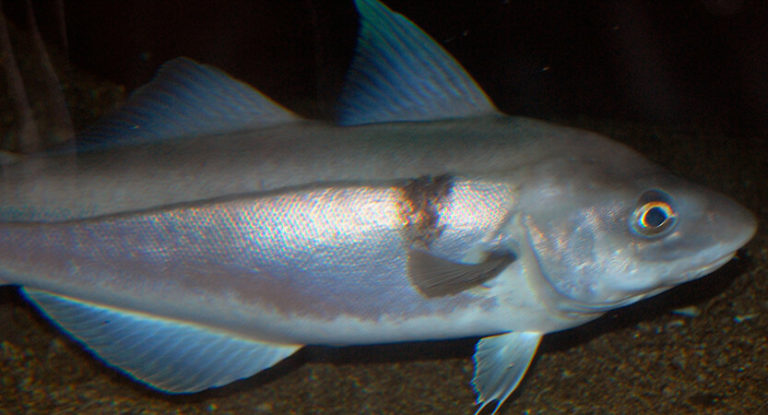
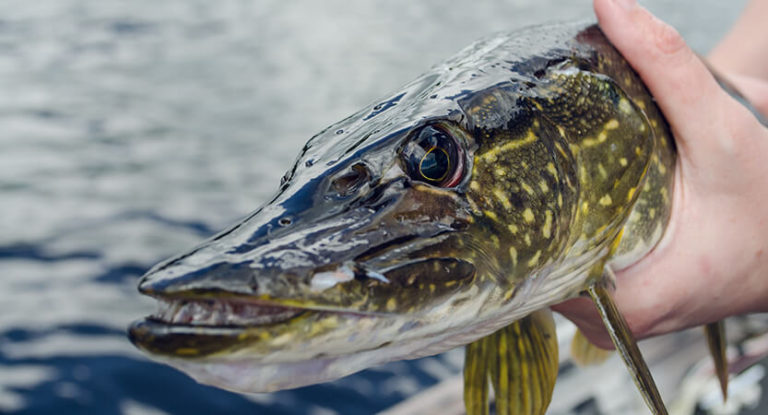
![Top 7 Best Fishing Kayaks in 2023 [Buying Guides] 8 Top 7 Best Fishing Kayaks in 2023 [Buying Guides]](https://trizily.com/wp-content/uploads/2021/12/fishing-kayak-768x415.jpg)
![10 Best Braided Fishing Line [Comparisons and Reviews] 16 10 Best Braided Fishing Line [Comparisons and Reviews]](https://trizily.com/wp-content/uploads/2022/03/best-braided-fishing-lines-768x768.jpg)
